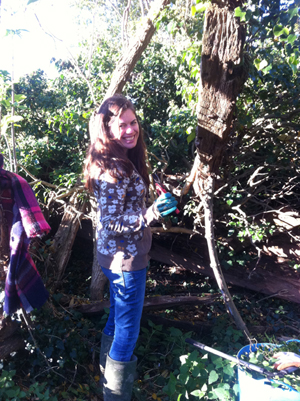
Thea helps uncover the Tudor timber frame
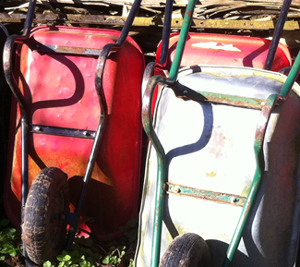
Orchard Barn wheelbarrow fleet
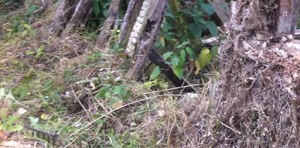
Pulling back the layers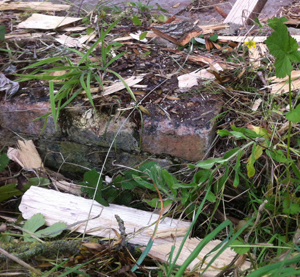
Finding the first course of bricks
|
|
|
|
|
|
|
Digging the Dirt 20th June 2018
I’m
tired, but I’m happy. Manual labour really does it for me. I get high
on just doing physical stuff, especially if it’s repetitive. My body
feels used, utilised, given a good work out, AND there’s something to
show for my endeavours.
Excavating
the footings of the Long House
So
today I pulled my trusty mattock out of the tool shed, put on my
Archaeologist’s hat (and safety goggles) and got digging. I had great
help from Steve, Roger and Calvin. Today we are the Orchard Barn
Archaeology Team! Wheel barrows at the ready we removed decades of
earth that had built up against the brickwork of the ruined long house. Yes! That’s the one that
we are collectively reinstating in a ‘like for like’ manner.
Traditional
Timber Framing
Now that the timber framing
is progressing to the point of raising half the frame this summer, I
wanted to know just how many courses of bricks this old house had when
it was first built in 1580! At 9am the first course was just about
visible. We were soon in full sun with sweat dripping down our faces. A
couple of hours later we revealed 3 more courses.
Buried
Treasure?
Jokes
bounded about finding Tudor coinage but truth to tell the Woolpit White
floor bricks and flint bones we dug up were treasures far more shiny
than gold. Resources like bricks and stones we can re-use.
Hand
forged finds
I
get excited about finding hand forged nails and go off on one about who
might have made them, and where? Roger dug up a rusty gin trap and
Calvin carefully carved out the lower levels of the old Ash tree stump.
In true Orchard Barn style we will make a feature of it – perhaps a
table with roots? Steve supervised the relocation of the spoil and
utilised the sandier soil for his Mediterranean bed.
Upcycling
and Repurposing
One
of the bestest things for me about working using hand tools is the
separation and utilisation of all the materials. We sort as we go.
Nothing is wasted. The greenery and roots is trundled down to Caelia
the current compost heap. She’s named after the Fairy Queen, and I like
to think of her as a the Queen of Compost too! Rubble is bagged up for
future projects, and chunky root trophies make useful additions to our
deadwood screens.
Better
than Treasure
In
sharp contrast , if we’d let a machine loose on this bank it would have
been mangled and rendered unusable. I digress easily. Back to the
bricks. By lunchtime (which arrived early today on account of there
being two birthdays and it being rather hot) we had ‘found’ 6 courses
of bricks. All of which were looking pretty damn good. In spite of
being buried for decades the courses were vertical, in line, and the
pointing in reasonable shape. Emotions ran high. If they were that
good, then maybe, just maybe we could re-use them in situ? How cool
would that be? Reinstating a 1580 on its original foundations?
First
built by someone with money
By
mid-afternoon a further two courses had been uncovered and our
assertion that whoever originally built this old house had money was
confirmed. In 1580 eight courses of bricks represented a major
investment. This old house was commissioned by someone of status!
That said - I’m not digging the dirt on who I think that person was.
Well not quite yet.
Subscribe
to our email news (see above) to continue reading about our back to
basics story,
rubble and all.
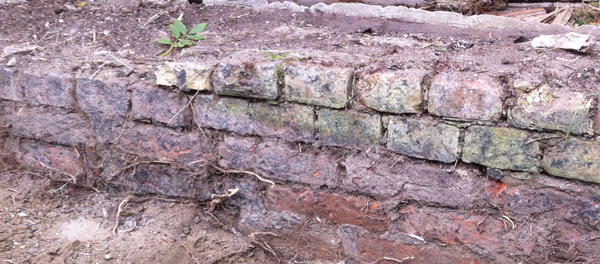
|
|